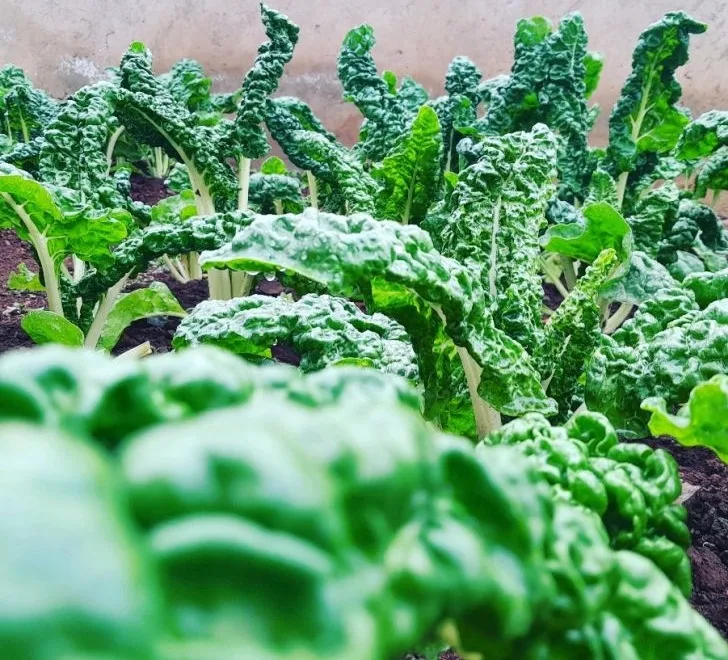Spinach (Spinacia oleraceae) is a tender-leafed
herbaceous annual plant in the family Amaranthaceae, grown for its leaves,
which are used as a vegetable.
The spinach plant has simple leaves which stem from the
center of the plant. They grow in a rosette and can appear crinkled or flat.
It also produces small yellow-green flowers which produce
small fruit clusters containing seeds.
Spinach is a fast-growing annual crop and survives only one
growing season reaching 30 cm in height.
It is eaten cooked as a vegetable and contains both large amounts
iron, calcium, and other essential vitamins and minerals.
Ecological Requirements
Spinach is a cool-weather vegetable and can survive the
first frost of temperate climates.
It germinates and grows optimally at temperatures between
4-16°C. However, it can withstand temperatures as low as -7C.
Spinach grows best in a well-draining loamy soil with an
optimum pH of between 6.4 and 7. It is sensitive to acidic soil and if the pH
is too high, adding HUMIPOWER is recommended.
Although it prefers full sun, spinach can still produce
significantly in partial shade.
In hot weather, seeds germinate slowly or may fail to germinate completely. Heat also causes the plants to bolt (go to seed) quickly, ruining the flavor of the crop.
How to begin growing spinach:
Step 1: Loosen your soil by digging down deep.
Step 2: Apply fertilizer, manure or
compost. If you are using fertilizer, use one handful for every square
metre of soil. Or four hands of kraal manure or compost for every square
metre of soil.
Step 3: Use a garden fork to mix soil and
fertilizer, manure or compost thoroughly, and then even out using a rake.
Step 4: Put the seed or seedlings into the
ground, working according to the instructions on the seed packet or the nursery
recommendations.
Step 5: Water the plants regularly. Use flood
irrigation, a sprinkler, a watering can, a hosepipe or drip irrigation.
Step 6: For a better crop, apply a top dressing
about five weeks later as spinach needs a lot of nitrogen for good quality,
broad leaves. For this top dressing, use either chicken manure or LAN applied
between the rows and work it in lightly. Remember to remove weeds regularly.
Step 7: Harvest spinach regularly. Remove only
the outer (older) leaves with a sharp knife about 30mm to 50mm above ground
level. Don’t damage the new leaves. If the leaves are not going to be used
immediately, bunch them and put them in water to keep them fresh for longer.
Step 8: Don’t plant spinach on the same plot over and over, because this causes spinach pests and diseases to build up in the soil. Rotate the crop with other vegetables such as pumpkins, beans, peas, lettuce, tomatoes, potatoes, and cabbage.
